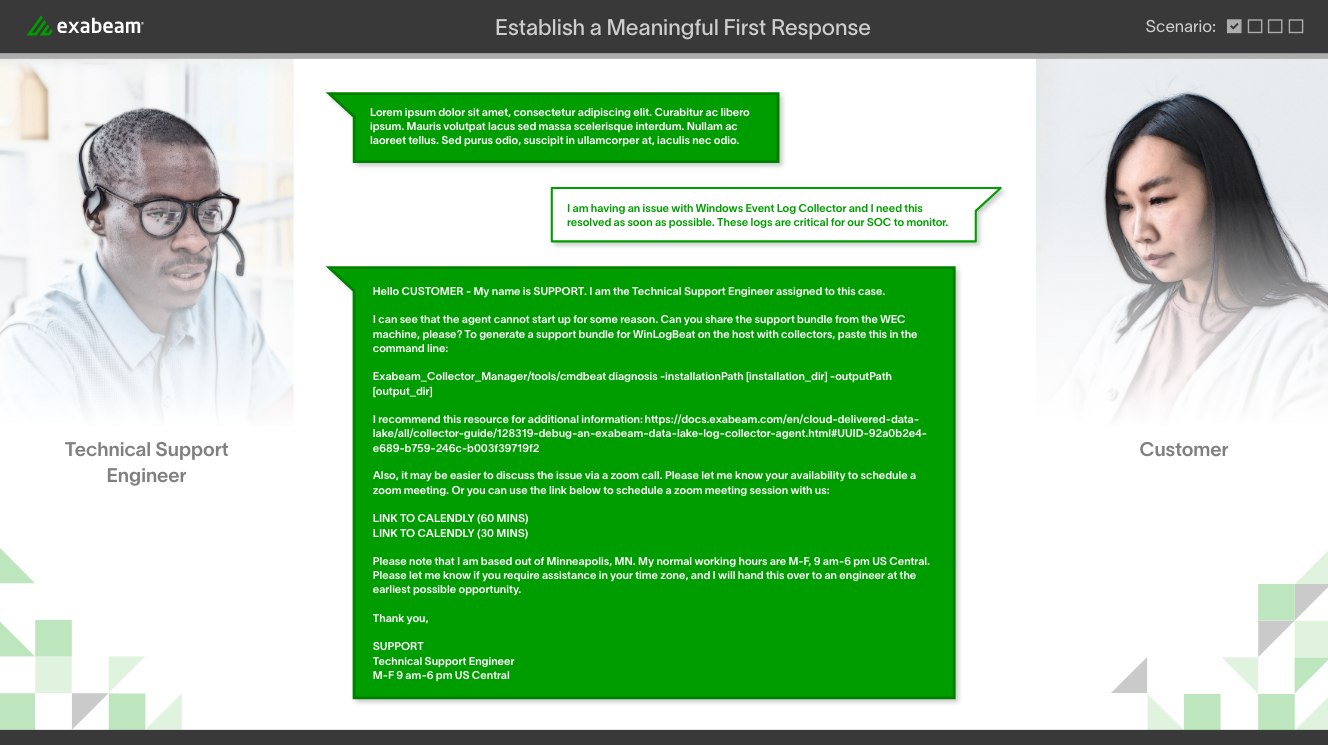
Exabeam
personI was the sole designer and developer on this project. While I collaborated with team members on feedback, the work shown is my own unless otherwise noted.
Responsibilities:
Tools Used:
Overview
This e-learning course was designed to help support engineers practice real-world skills for handling customer interactions. It focused on teaching them how to manage different customer types and how to navigate interactions effectively. By using real transcripts, field notes, and presenting realistic correspondence, the course aimed to give learners hands-on experience in recognizing, responding to, and self-editing their communication. The ultimate goal was to emphasize how well-phrased and thoughtful communication can positively influence customer perceptions.
Learning Objectives
- Equip support engineers with practical skills to handle various customer interactions.
- Provide real-world examples and allow learners to practice effective communication in different phases of customer support.
- Highlight the importance of positive, clear, and concise communication.
- Offer a realistic, interactive walkthrough that simulates the typical customer correspondence a support engineer would encounter.










